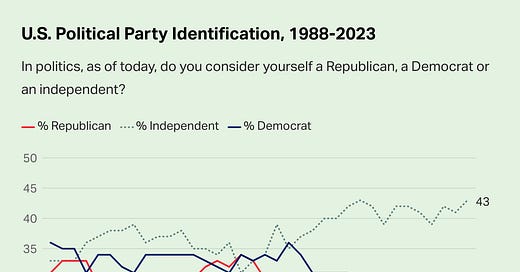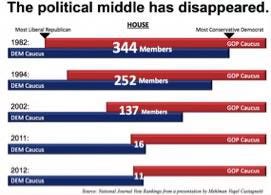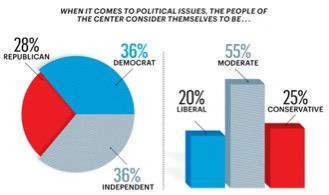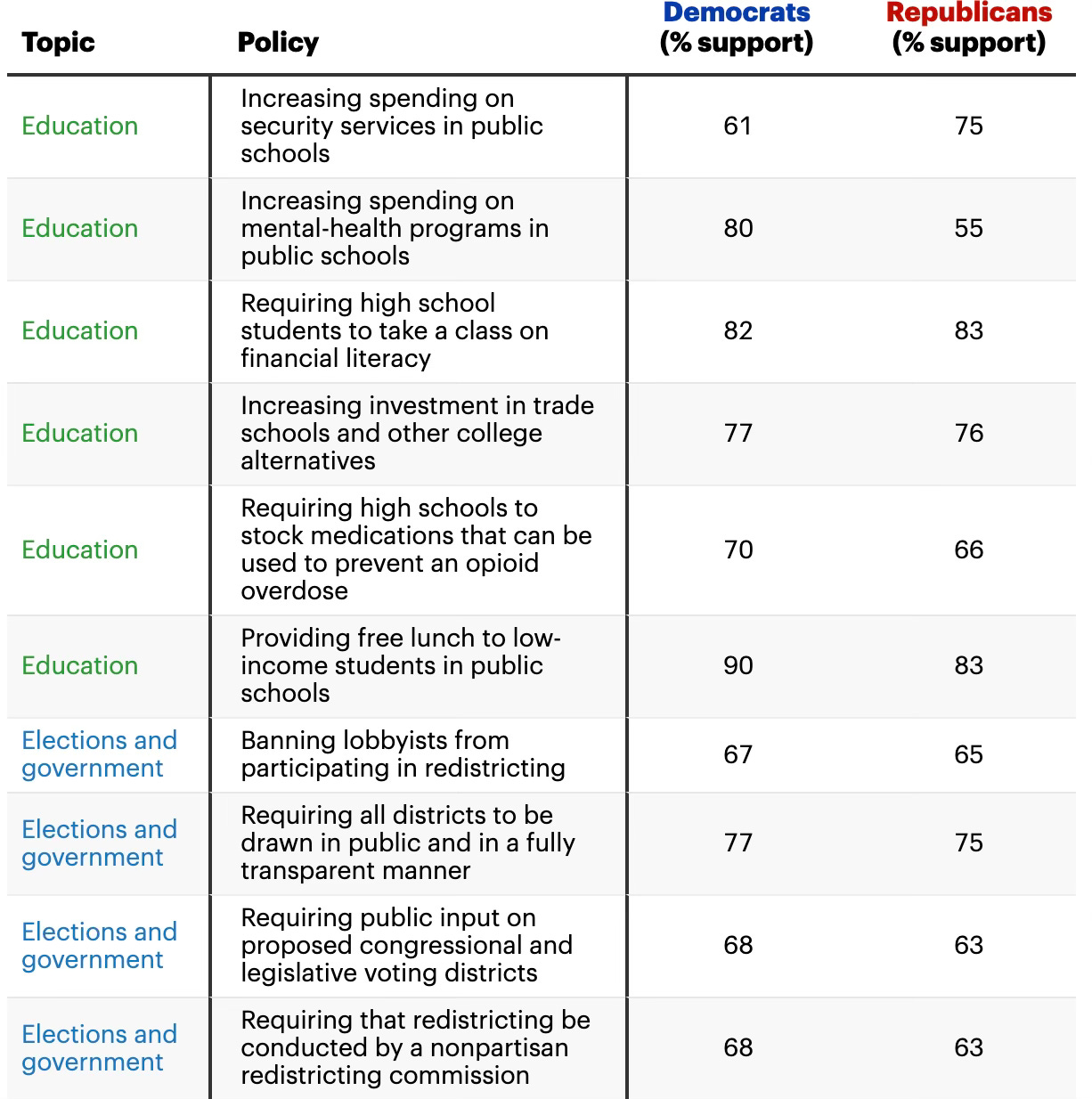Ch 1.3 | 🖖The majority of Americans are in the middle
Thankfully, today, the vast majority of the Americans remain in the middle!
Below is a bit of data that I compiled back in 2013 when I was on the board of Freedom Communications, the publisher of the Orange County (Calif.) Register.
At the time, I had worked to convince the ownership at Freedom Communications to leverage our media outlets to launch a third party. Unfortunately, we were never able to come together on a strategy.
The data hasn't changed all that much in the last decade. In fact, the largest percentage of Americans identify as independents.
Is it fair that there are more independent voters than either Republicans or Democrats, and yet independents are not allowed to vote in primaries. Or that there are very few independent elected officials? Does that make sense?
Moreover, do you think it's fair that the government should be allowed to use taxpayer funds to pay for primary elections that benefit private organizations? That just feels like "taxation without representation" to me! Doesn't common sense dictate that using public funding for partisan, closed primaries problematic because independent and unaffiliated taxpayers are not granted the same privilege to participate as party members?
As I referenced earlier, we are not as polarized as the media portrays us. It doesn’t feel that way though does it. I think the answer is sad, but obvious: The "media establishment" has been weaponized against us! I will discuss how that came to pass later in the Chapter entitled "The Media."
YouGov, which conducts extensive public polling, identified 100 policies supported by the majority of Democrats and Republicans, covering everything from education to abortion to foreign policy.
Some issue areas appear more likely than others to garner bipartisan support — likely a reflection of both genuine inter-party agreement and the extent to which those areas have been polled by YouGov and its media partners.
Among the topics with the greatest number of policies with bipartisan support are election reform, health care, and policing.
This is important data. While you can see partisan bias in the results, each issue has the support of the majority — and in some cases vast majority — of Americans.
So given the fact that the vast majority of us are in the middle, how is it that the fringe of both parties control the narrative and policy agendas? As I've dived in researching these issues, I've come to see that it's actually due to our political system, which has intentionally manifested this reality. The political parties have fed our deepest fears and manifested a culture of division that is ripping the country apart.








